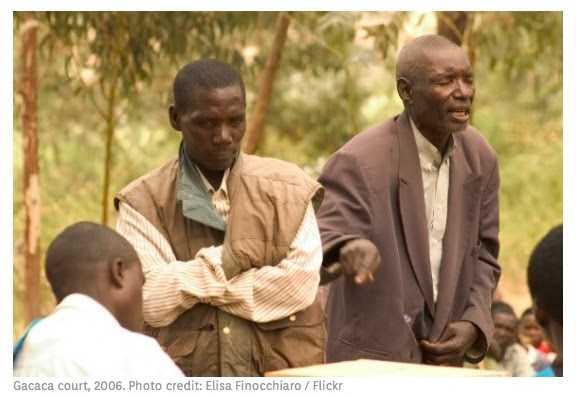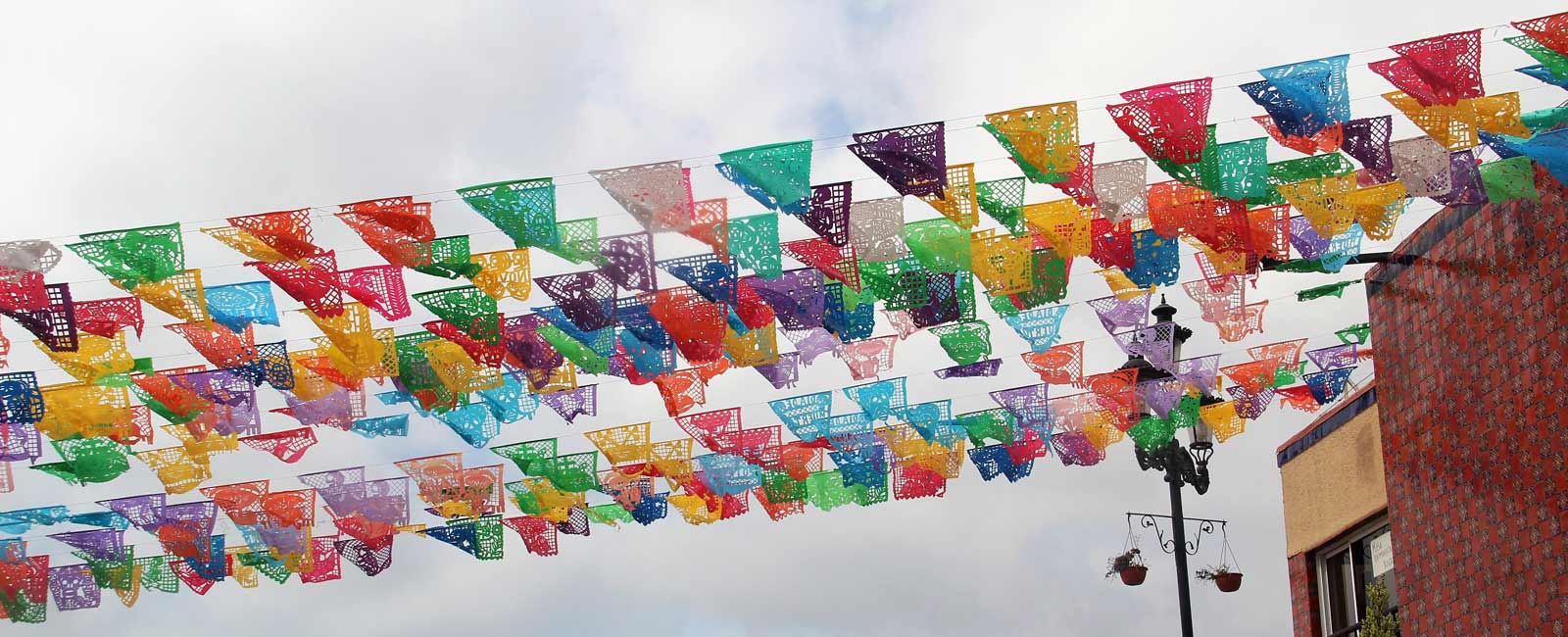November 14 2013: What role can memory and truth play in rebuilding communities in the aftermath of a genocide? In the second post of the series, Katherine Conway writes on the importance of the individual’s right to the truth and on what the Gacaca courts have achieved in Rwanda.
Truth plays a crucial role in bringing justice to war-torn communities and in contributing to the reconciliation process. But what do we mean with “truth”?
Truth is a concept that is notoriously hard to pin down. It implies objective credibility but also requires subjective understanding. It suggests agreement about factual reality but also space for differinginterpretations. It takes on value in the public sphere while remaining an intensely private matter for the individual, and it is honed on the past but may change our perception of the present and teach lessons about what to do with the future.
Truth is a key concept in the field of transitional justice, an approach that tries to redress victims and achieve justice in times of transitions from conflict or dictatorial regimes. Transitional justice literature outlines the many benefits of truth. First, it is considered to be a vital part of the healing process, enabling a sense of closure. Secondly, the acknowledgement of harm done re-creates a sense of dignity for survivors. Thirdly, truth-seeking mechanisms are key for understanding past atrocities and are intended to be restorative in nature, contributing to the reconciliation process. Additionally, Naqvi points to the benefit to society “collective catharsis” and “collective conscience” against the repetition of acts.
Memory and truth: two overlapping, but different notions
Memory is not inherently truth, and truth does not inevitably lead to an environment that is safe for a multiplicity of memories.
The ability to access and seek understanding of the past is a key element of both memory and truth. Memory and truth are overlapping forces. Yet, they are not interchangeable and one does not necessarily lead to the other. Memory is not inherently truth, and truth does not inevitably lead to an environment that is safe for a multiplicity of memories.
The process of engaging with memory and searching for elements of truth can be extremely difficult for individuals and societies. In several post-conflict contexts, truth and memory have both been products of historical inquiry, community dialogue, and other reconciliation efforts. According to the International centre for Transitional justice (ICTJ ) “truth and memory are not just a matter of state policy…they are also the responsibilities of any society striving for security, equality, and peace.”
In the case of Rwanda, efforts to understand the truth have been undertaken by a number of actors. Many of these systems deal with “forensic truths”, referring to those which can be proven. On the other hand, memory initiatives have the possibility of addressing “social truths,” which refer to the overlap between truth and memory, as there may be multiple versions of memory and truths within a population.
Gacaca: broad participation in memory and truth
Gacaca created a particularly open, yet controlled, space for understanding what took place during the 1994 genocide.
In 2001, Rwanda set up the Gacaca, community-led courts built on traditional community legal systems. One of the primary intentions behind Gacaca was to air truths about the events of the genocide. The process targeted the community level, since “bigger fish” perpetrators were tried at the ICTR or through the national court system.The meetings were designed to allow victims and eye-witnesses to be heard, and ultimately to decide on a punishment for the perpetrator. Gacaca created a particularly open, yet controlled, space for understanding what took place during the 1994 genocide.
The Rwandan government claims that Gacaca is a mechanism by which the country can rebuild a sense of national unity. The courts engaged much of the population in a post-genocide rebuilding process and community-level dialogue. Judges and government officials were involved, but, ultimately, the outcome of Gacaca relies on people’s participation, engagement, and trust in the process.
In his book, The Gacaca Courts, Post-Genocide Justice and Reconciliation in Rwanda, Phil Clark defines three types of truth, which create a helpful framework to analyse Gacaca and other memory initiatives. He points to the legal truth, thepersonal/therapeutic/emotional truth, and finally, the restorative truth. In a general sense the notion of truth telling is that it may provide a sense of healing on the individual and community level through regaining a “sense of belonging”. This “sense of belonging” concerns how the truth is expressed and thus, shaped, to aid in the rebuilding of the social fabric of a society, thus it points to the communal aspects of truth as opposed to the individual.
Gacaca opened the possibility of dialogue on the community level, thus allowing the possibility of truth and memory sharing in public, structured setting. Through his research, Clark views Gacaca as a “central element in moving towards reconciliation.” The individuals Clark interviews report that “much truth has come out and participation is generally high.” Gacaca is one of few spaces for communication and, for some, it is a way to overcome what Clark refers to as “a conspiracy of silence.” Through participating in the proceedings, members of communities that are often disenfranchised, including women, have the ability to participate not only in discussion, but also in the process of rebuilding the social fabric of the community.
To what extent do Gacaca lead to truth?
Although its overall approach was largely considered positive, Gacaca courts have drawn widespread criticism.
Although its overall approach was largely considered positive, Gacaca courts have drawn widespread criticism. According to Clark, the population remains deeply divided about whether Gacaca has assisted in the peace process.These are the main shortcomings of the system that critics have pointed out:
- There is an inherent problem in having a traumatized population make legal decisions, in a situation where few checks exist on the proceedings.
- The proceedings are not absent of the power structures that exist within society. Individuals that Clark interviewed claim that Gacaca became another mechanism for elites to control the population and through which the state can impose legal and historical truths.
- There are concerns about due process and the protection of rights of genocide suspects and that it encourages punishment of Hutus.
- The culture of silence in Rwanda has created a cultural preference and “requirement” not to discuss the genocide or the truths of what occurred in public. This makes it very difficult for individuals to tell their story. Thus, even if people are required to attend the hearings, they may not engage with truth-telling or reconciliation processes.
- Gacaca is bound by the time period of crimes (i.e. only 1994) that are discussed and the crimes within the time frame (i.e. only crimes against Tutsis). The process does not openly contend with the crimes that are still within the “veil of secrecy.” While Gacaca did open space for dialogue, it was not successful in creating a space for full versions of the truth or amultiplicity of memories to exist.

The benefits, and re-traumatization, caused by Gacaca are still unclear. Clark states that it is contested as to whether Gacaca had lead to truth. The original intention of Gacaca was to create a space where parties could interact, interpret, and rearticulate personal testimony, thus fulfilling Clark’s category of “truth-shaping.” While Gacaca has indeed provided a space for dialogue, it did not fulfill the realm of “truth shaping,” meaning a sense of communal understanding of what occurred during the genocide due to the ongoing fear of speaking about the genocide in public settings.
Theories of transitional justice posit ways to move forward in the wake of mass atrocities. These mechanisms seek to help individuals, communities, and societies heal, seek justice, and rebuild lives. Access to the truth and memories of the past shape individual’s and society’s understanding, which ultimately serves as a guide as people rebuild and engage in public dialogue. In order to create a healthy memory environment, the ability to share, question and discover must be present for healing to take place.
In June 2012, Gacaca officially ended, closing more than 11,000 community courts. The next steps for the creation of a more complete narrative are unclear, but the opportunity exists for the creation of a historical record, further dialogue, and engagement in the reconciliation process.
Education Travel,education travel tours,Global Community,Global Education,Peace Works Travel,Peace Works Travel Upcoming Trips,Power to the Peaceful

